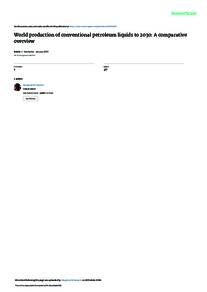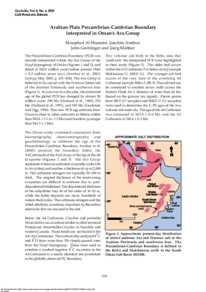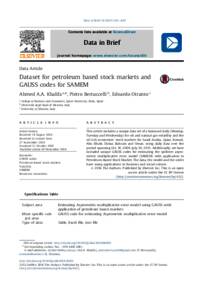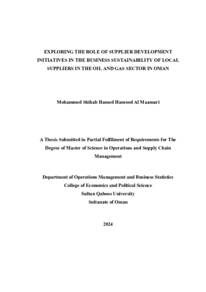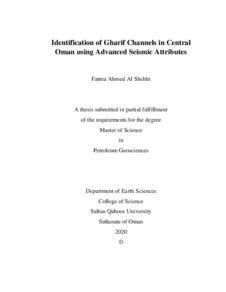Document
World production of conventional petroleum liquids to 2030 : a comparative overview.
Identifier
DOI: 10.2113/geoarabia1401215
Publisher
Gulf Petrolink.
Gregorian
2009-01
Language
English
English abstract
This paper compares estimates of reserves, resources and future production scenarios of conventional petroleum liquids for five peaked countries and the World as determined by various analytical techniques. It starts by illustrating Hubbert's Model using historical production from offshore Norway and the United Kingdom (UK), and onshore Oman, Syria and Yemen, to estimate the resource, peak rate and year. For all five countries the estimated resources were found to significantly differ from known reserves (cumulative production plus proved reserves) and ultimate recoverable resources estimated by geologic studies; accordingly the model's estimate is here referred to as the producing resource. Importantly, the producing resource - not the known reserves or ultimate recoverable resources - represents the quantity that most closely predicted the peak (rate and year) and early decline for these countries. The model's production trajectory became accurate after the producing resource was between 10-30% depleted for four countries; the exception was for the UK at 44% depletion and due to non-geological circumstances. In the five countries, the peak occurred when the producing resource was approximately 50% depleted, and within a production plateau - here defined as exceeding 91% of the peak rate. The Hubbert Model cannot be applied to all basins and/or countries. Its World predictions are controversial and therefore presented as a Production Base Case and compared to those from other studies. The Base Case for conventional petroleum liquids predicted: (1) average producing resource of c. 2,860 billion barrels (Gb), (2) peak rate of c. 85.7 Mb/d (31.3 Gb/year), and (3) peak year in ca. 2016. The data used for this analysis is oil production as reported by BP (2008) from 1991 to 2007, consisting mostly of crude oil, lease condensates and natural gas liquids. The producing resource is just 3% greater than the 95%-confidence estimate for ultimate recoverable resources of 2,770 Gb effective in 2025 by the United States Geological Survey (with 152 Gb added for Canadian oil sands, BP, 2008). It is 351 Gb greater than the end-2007 known reserves of 2,509 Gb, consisting of 1,119 Gb produced, 1,238 Gb proved, and 152 Gb in Canadian oil sands (BP, 2008). The unproven resource of 351 Gb is achievable if the 20 Gb/year rate of new liquids reserves (undiscovered and reserves growth), added in 2005, is maintained on average between 2008-2025. The convergence of these three independent techniques on a resource of c. 2,860 Gb makes no assumption about the price of oil. The predicted peak rate (85.7 Mb/d in 2016) is 4.2 Mb/d greater than the 2007 average oil production of 81.5 Mb/d (BP, 2008). It compares closely to the peak rate of 86.2 Mb/d in 2012 obtained by balancing new megaprojects (more than 40 Kb/d) coming onstrearn in 2005-2014, against existing 2004 production declined at 4.5%/y. The Base Case predicts that production in 2030 will be 78.0 Mb/d, as consistent with the high-price scenario for conventional petroleum liquids production by the Energy Information Agency (2008): price of oil to increase to $186 /barrel by 2030 but production to fall to 80.3 Mb/d in 2030 from 81.8 Mb /d in 2004.
Member of
ISSN
1025-6059
Resource URL
Category
Journal articles

